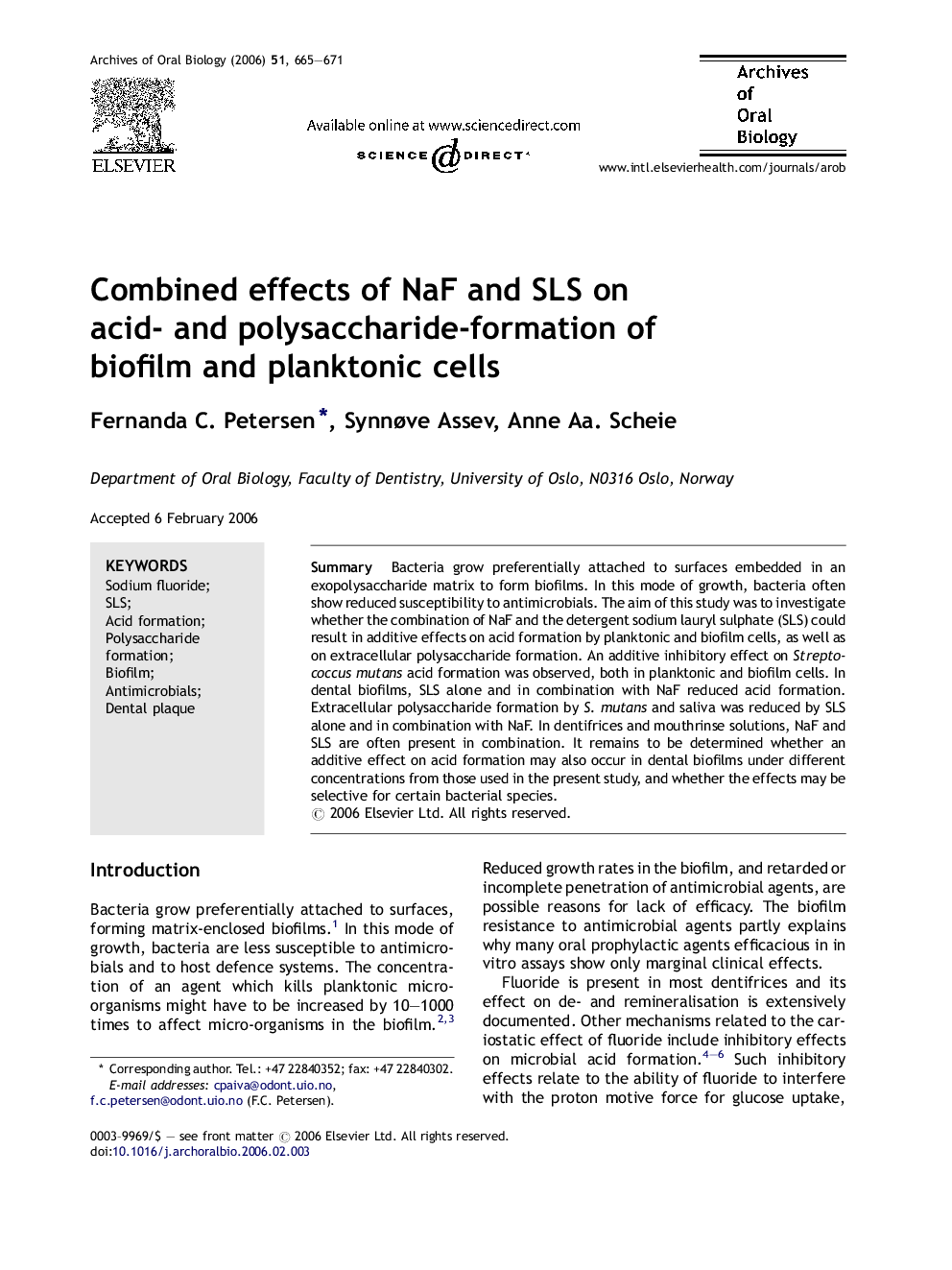| Article ID | Journal | Published Year | Pages | File Type |
|---|---|---|---|---|
| 3121411 | Archives of Oral Biology | 2006 | 7 Pages |
SummaryBacteria grow preferentially attached to surfaces embedded in an exopolysaccharide matrix to form biofilms. In this mode of growth, bacteria often show reduced susceptibility to antimicrobials. The aim of this study was to investigate whether the combination of NaF and the detergent sodium lauryl sulphate (SLS) could result in additive effects on acid formation by planktonic and biofilm cells, as well as on extracellular polysaccharide formation. An additive inhibitory effect on Streptococcus mutans acid formation was observed, both in planktonic and biofilm cells. In dental biofilms, SLS alone and in combination with NaF reduced acid formation. Extracellular polysaccharide formation by S. mutans and saliva was reduced by SLS alone and in combination with NaF. In dentifrices and mouthrinse solutions, NaF and SLS are often present in combination. It remains to be determined whether an additive effect on acid formation may also occur in dental biofilms under different concentrations from those used in the present study, and whether the effects may be selective for certain bacterial species.
